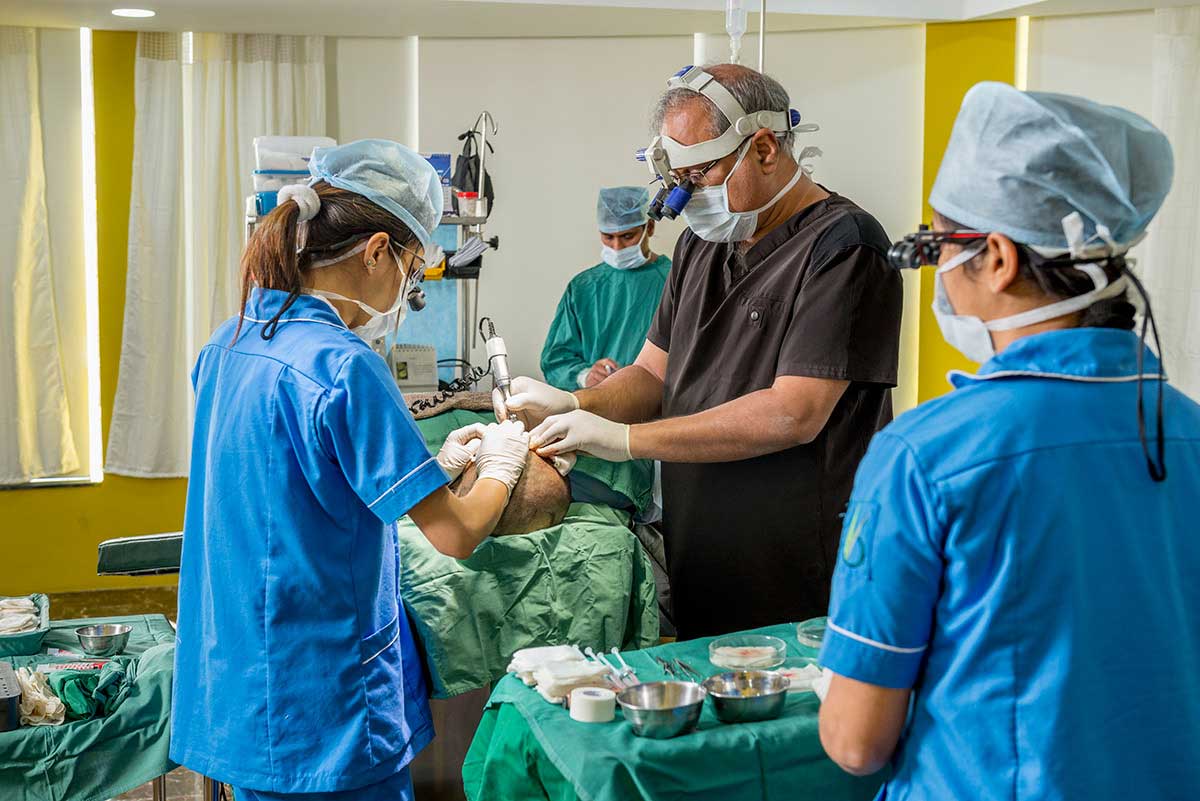Female Pattern Baldness
A significant number of women suffer from hair loss at some point of their lives. In the case of postmenopausal women, hair thinning or bald spots are common problems. Female pattern baldness or androgenetic alopecia is the major type of hair loss in women and can severely affect their quality of life and emotional well-being. In this condition, one can notice gradual thinning at the parting line followed by an increasing amount of hair loss from the top of the head. As opposed to male pattern hair loss, women generally become bald or have a noticeable receding hairline.
There can be numerous potential causes of female pattern baldness including emotional or physical stress, certain medications or medical conditions and more. Regardless of the cause, the condition can be frustrating. But, with proper understanding and care, it is possible to control this problem. Here is more on female pattern baldness and the ways to curb it.
What is female pattern baldness?
Also referred to as androgenetic alopecia, female pattern baldness is a condition wherein women suffer from excessive hair loss. As women age, it is normal to lose some amount of hair and nearly two-thirds of women can experience hair loss after hitting menopause. However, androgenetic alopecia is hereditary and the very first signs would be thinning hair or a widening parting line. Less than fifty percent of women actually have a full head of hair throughout their lives.
Different Stages of Female pattern baldness
In this condition, the growing phase of the hair drastically slows down and it takes a lot more time for the newer hair to start growing. With the shrinking of the hair follicles, hairs tend to become thinner and finer over time, which can cause easy breakage. Females can lose anywhere between 50-100 hairs on a daily basis but those suffering from female pattern baldness would lose more. This condition can be classified into three types:
- Type I: Small and very less noticeable thinning begins around the part
- Type II: The part starts to widen and there is increased thinning around it
- Type III: Highly noticeable baldness around the top part of the scalp along with thinning of hair throughout
How to Prevent?
Preventing female pattern baldness is not always possible as the condition is genetic. But, women can follow certain preventive tips to prevent damage and breakage. Listed here are a few of them:
- Include essential vitamins, proteins and iron in their diet
- Limit treatments like straightening, hair extensions and perming that can cause hair damage
- Brushing the hair when it is fragile and wet can lead to hair breakage. Use your fingers instead to de-tangle it or wait till the hair is dry
- Safeguard hair from sun damage by wearing a scarf, hat or carrying a parasol.
Treating female pattern baldness
Using these medicines can be helpful in the treatment of the hair loss problem among females appreciably:
- Minoxidil
It is a topical medication used for both men and women to treat hair loss. Applying it to the scalp on a daily basis prevents thinning and stimulates hair growth. The medication would not restore all the lost hairs but it can grow back a considerable amount of hair. However, the results might not be noticeable for six to twelve months. You should use the medication on regular basis or as prescribed by the doctor to maintain the effect. Women who are premenopausal cannot apply Minoxidil above 2% strength.
- Hair transplant
Female pattern baldness generally affects only some areas. During the process of hair transplantation, the doctor would take hair from a healthy hair growth area and then transplant it to the balding spots. The process can take several hours and the surgeon administers local anesthetic to prevent pain.
- Spironolactone
It works by removing excessive fluid from the body and blocks the production of androgen. It can help women to regrow their lost hairs. However, you should undergo electrolyte and blood pressure tests on a regular basis while taking this drug. Always consult your doctor before starting this medicine.
- Laser Treatment
These days, try-at-home laser treatments are also available for treating hair loss problems. The device works by emitting very low level of laser light that can stimulate hair growth. There is no scientific corroboration yet in the benefits of Low Level Laser Treatment for Hair Loss.
Other Options
A research showed that women who take antioxidants, omega-3 fatty acids, and omega-6 fatty acids could develop thicker hairs. In a few cases, Platelet-rich plasma therapy can prove to be advantageous. The process includes drawing your blood, spinning it, and injecting back the platelets into the scalp in order to stimulate hair growth.
A majority of women who do not wish to deal with the hassles of several treatments and medication simply choose to wear a wig to conceal the bald spots.
Wrapping up!
It is crucial to remember that female pattern baldness is not a reversible condition. With proper treatment and care, you would be able to stop losing more hair and potentially regrow some of the hair. Also, patience is the key here, as treatments can take as long as a year to work and for you to see noticeable changes. For more information on this severe health ailment, or to get away with this problem at the earnest, you can always visit Darling Buds.

